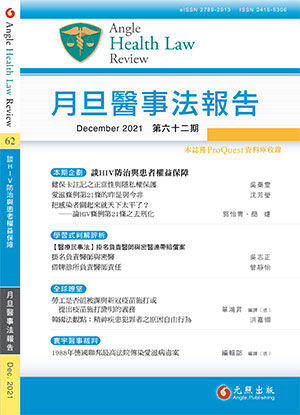我國法律中人骨的處置權【醫法新論】 試閱
The Management Rights of Human Bones in Taiwan’s Laws
人骨同時具有以下特性:死者、人體器官、遺骸,導致人骨在我國法律中的位置,很難定義。即使依據出現的方式,可分為墓葬人骨、舊社人骨、野外人骨、考古遺址人骨,但法律權利並非如此區分,而是區分為有主人骨與無主人骨兩大類。一般而言,墓葬人骨大多屬有主人骨,考古遺址人骨大多屬無主人骨,但舊社人骨、野外人骨的管理權就需要格外注意。針對處置方式,有主人骨以擬人的方式處置、無主人骨以物的方式處置。死者的身分為原住民或非原住民,亦有不同的處置內容。
Human bones have the following characteristics coincidently: the dead, human organs, remains. These complexity make them difficult to be defined the right and obligates in Taiwan’s laws. Even the human bones usually are founded in tombs, old indigenous villages, wild fields, or prehistoric sites, they are mainly divided into two categories in Taiwan’s laws: mastered bones and non-mastered bones. In general, bones in tombs are mostly mastered, and bones in prehistoric sites are non-mastered. However, the management rights of bones in old indigenous villages or in the fields require special attention. Regarding the management methods, mastered bones are managed in an anthropomorphic manner, and non-mastered bones in an objects manner relatively. The indigenous status of the dead are also treated differently with non-indigenous dead.
129-143






